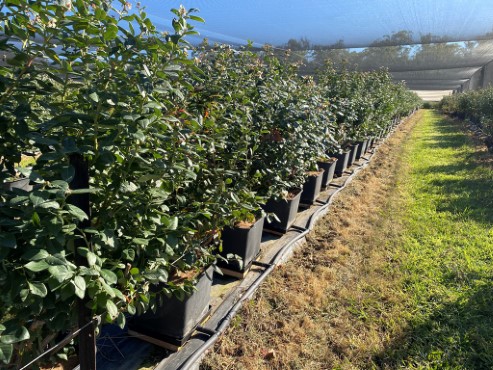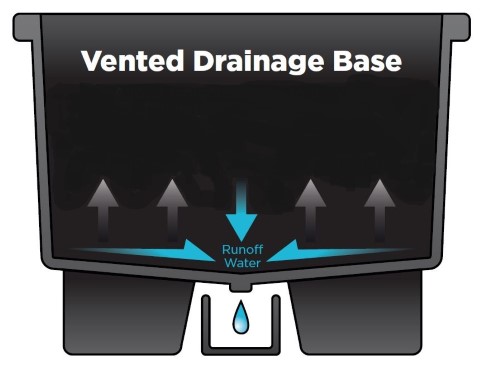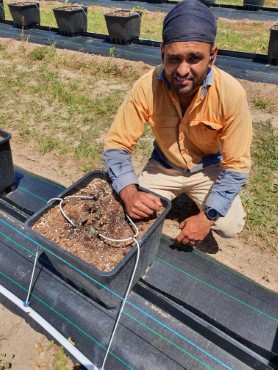
Future Proofing the Blueberry Industry
25 February 2021
Aman Lehl is a blueberry and raspberry grower based in Corindi, NSW. In a partnership with the NSW Department of Primary Industries (DPI), Aman’s family owned berry farm is host to a demonstration site for the Clean Coastal Catchments project, designed to showcase change and encourage wider adoption of best management practice in the berry industry.
DPI researchers, funded by Clean Coastal Catchments, are working with Aman to investigate the effectiveness and real farm practicality of capturing and re-using drainage in blueberries grown in substrate.
“I have always been interested in technology and enjoy working with it,” said Aman.
“With the recent drought and the possibility of climate change, being more efficient with our water use is important to remain sustainable into the future. In addition to saving water, reusing the fertiliser could also have positive benefits for the environment and the wallet.”
However Aman and the research team have found that retro-fitting a farm system to collect and re-use runoff can be difficult.
“It would be far simpler to design a production system with the ability to collect drainage at the installation stage,” explained NSW DPI Berry Industry Development Officer, Melinda Simpson.
The Lehl family have been growing blueberries since 1996. In 2016 they diversified production with an expansion into raspberries. Once the raspberry plantings were established, blackberries seemed like a natural addition to the farm.
Aman has taken advantage of the opportunity to start from scratch with the new blackberry planting, installing a recycling system modelled on the retro fitted set up in the Clean Coastal Catchments blueberry demonstration site. All the drainage from the one hectare blackberry plot is captured with the aim of re-using valuable water and nutrients.
Aman has planted his blackberries in 30 litre Galuku Plantlogic drainage collection pots which direct run off water into a channel allowing for collection.

The drainage is pumped into holding tanks and treated with Ultraviolet light to disinfect the water before re-use, preventing the re-circulation of potential disease problems.
“Cost is the biggest challenge in setting up a system that allows drainage collection,” said Aman.
“Currently it is very expensive to set up compared to a normal run to waste system. This upfront cost will need to come down to encourage more take up amongst growers.”
Aman estimates that using this system, he will be able to collect and re-use between 1 and 1.3 megalitres of water per hectare per year.
The Clean Coastal Catchments research team is also working with Aman to calculate the savings in his fertiliser budget, as well as the potential reduction in unwanted nutrient flows into the environment.

Melinda Simpson is leading the research project and she says there is a lot to learn about how recycling systems work and how to overcome potential difficulties that may arise in the long term.
“Through this demonstration site we are trying to better understand issues such as nutrient re-use, and to determine the necessary level of slope to facilitate proper drainage and prevent water pooling,” said Melinda.
“Other key questions under consideration, are what cost savings can be made on nutrient and water re-use, and how long does this type of system take to pay for itself?”
“Aman’s collaboration with our research is very much appreciated,” said Melinda. “There are important findings arising from this research that will be of significant benefit to the wider industry.”
With ever-growing concerns regarding drought, social license and the future possibilities for state and council authorities to enforce better on-farm management of nutrient rich wastewater, the NSW DPI gratefully acknowledges the time and investment the Lehl family has contributed to installing and trialling water recycling systems in partnership with the Coastal Catchments project.
This article was originally published in Edition 5 of the Australian Berry Journal.


